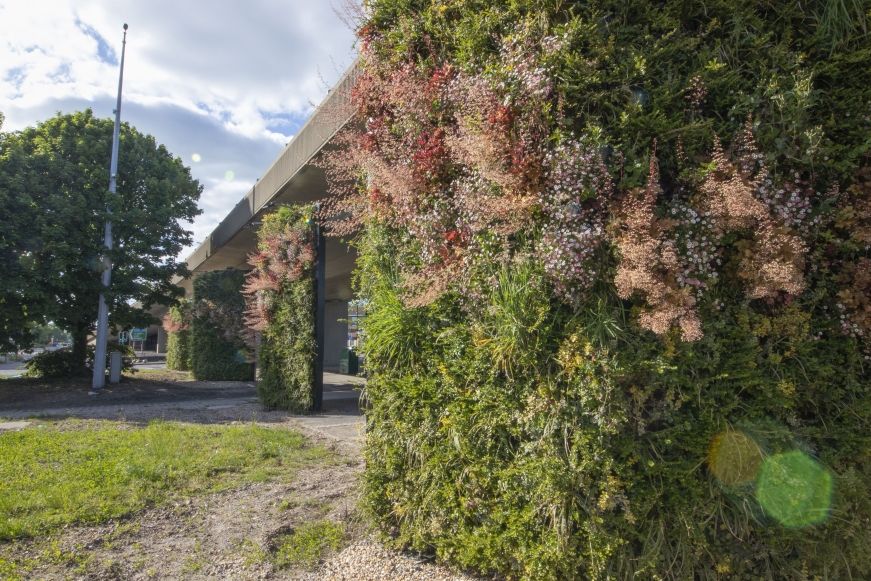Southampton’s Living Wall bursts into life
Living Wall at Millbrook roundabout has come into bloom

Southampton City Council’s Living Wall at Millbrook Roundabout has burst into bloom. The flowering green walls have added a much needed vibrant splash of colour to the area. The wall is designed to be green all-year, with the plant species selected specifically for Southampton. With flowering plants, the wall is providing a habitat for wildlife and supporting the delicate and varied biodiversity residing in the city.
The installation of the Living Wall was included in reconstruction plans issued by the council and its Highways Partner Balfour Beatty Living Places. The essential works to reconstruct the foundations and resurface Millbrook Roundabout started in October 2018 and included the UK’s first Living Wall to be featured on a major road network.
The council’s Green City Plan sets out how it intends to tackle climate change through five key themes. The vision of becoming a cleaner, greener healthier and more sustainable city can only be achieved through setting ambitious goals. The Plan details the outcomes the council wants to achieve in the next 10 years and the activities planned over the first three years. Delivering clean air and the natural environment are two of the main concerns covered in the plan. Highlights include being a carbon neutral city by 2030, promoting the switch to electric vehicles and increasing the number of wildflower meadows in Southampton. Areas to benefit from additional meadows this year include Millbrook Roundabout and Hoglands Park.
It is widely accepted that placing vegetation within urban areas has a positive effect on air quality. During photosynthesis plants absorb CO2 and other gases such as SO2 (Sulphur Dioxide) and NO2 (Nitrogen Dioxide), ozone and airborne ammonia through their leaves. They also act as sinks to reduce the concentration of particulate matter in the local atmosphere.
Councillor Steve Leggett, Cabinet Member for Green City and Place, said: “The new Living Wall has come to life within months of being installed. The variety of plants used has ensured that we are seeing not only an environmental benefit but an attractive addition to the Southampton. We are lucky to have over 1,000 hectares of open space in the city, as part of the Green City Plan we are committed to protecting and enhancing our natural environment. New initiatives like our Living Wall are being reviewed as part of the ongoing plans.”
Brian Hammersley, Contract Director for Balfour Beatty Living Places, said: “We are incredibly proud to have supported Southampton City Council in the delivery of this flagship project and pleased that the benefits of the Living Wall at Millbrook Roundabout are now being realised.
“In a first for the UK, the Living Wall will not only improve air quality for local residents and improve the aesthetic of the roundabout, but has the potential to transform the way that we sustainably deliver highways schemes across the UK now and in the future.”
Living Walls explained
The new Living Walls are supplied by Biotecture, a specialist in the design, supply, installation and maintenance of sustainable living walls and green infrastructure. The walls will take the form of ten green columns which will appear to support the flyover. The plants will sit on free-standing frames away from the columns, meaning the structure is not affected.
The plants are nurtured through their early growth stage in greenhouses which means they are fully developed and green at the point of installation. They are robust enough to thrive in the UK climate with 95% coverage all year round. The Living Wall is designed to be sustainable, easy to access and easy to maintain. The frames have an integrated irrigation system which uses sensors that maximise efficiency and minimise water waste.


